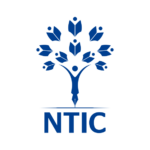
In January 2012, Udacity was launched; then Coursera in April 2012, followed by edX in May 2012. Of course, these are the world’s leading online learning platforms offering MOOCs, or Massively Open Online Courses. Now Coursera is teaming up with several leading universities in the UK and U.S. to leverage its MOOCs platform to offer online degrees.
Coursera first announced its intention to depart from its prior root of pure MOOCs offering on 30 March 2016, to extend its endeavors to actual degrees. According to the plan, starting from the fall of that year, users would be able to earn a computer-science master’s degree in data science from the University of Illinois at Urbana-Champaign, whose computer-science graduate program was ranked fifth in the U.S. in 2014. Six days ago, on 6 March 2018 to be precise, Coursera announced it is adding six new full degrees, including its first bachelor’s degree, in partnership with five top universities. According to techcrunch.com of 6 March 2018, the participating schools and their respective degrees include Arizona State University (U.S.) offering a Master of Computer Science; Imperial College London offering a Global Master of Public Health; University of Illinois at Urbana-Champaign offering a Master of Computer Science; and both a Master of Applied Data Science and a Master of Public Health from the University of Michigan (U.S.). University of London’s offer of a Bachelor of Science in Computer Science is the first move of Coursera into undergraduate degrees.
So, how has the MOOCs learning platform prepared Coursera to take on this new task? A layperson’s history of Massive Open Online Course (MOOC) was given in the 4 March 2013 article in this column, in which I traced the history of MOOC to the “Connectivism and Connective Knowledge” at the University of Manitoba, Canada, in 2008. The “connectivist” way of teaching advocates “aggregation” of online contents from various contributors, “re-mixing” the contents to properly group them into coherent topics, and cross-linking them. However, unlike the earlier MOOC philosophy that emphasized the connectivist philosophy, Coursera and edX (see below) are based on the more traditional learning managing systems.
The two MOOC programs Coursera and edX are the most popular. The story goes that an enrollment of 100,000 in each of 3 courses offered at Stanford University in 2011 motivated professors Daphne Koller and Andrew Ng to launch Coursera at Stanford in 2012. Coursera subsequently announced partnerships with several other universities, including Princeton, University of Pennsylvania, and The University of Michigan. Today, the program has scores of partnering universities from countries such as China, France, Mexico, and Singapore. Coursera reportedly has attracted up to 31 million students and is offering 2,700 courses.
Concerned about the commercialization of online education, which is the Coursera model, Massachusetts Institute of Technology (MIT) launched the MITx not-for-profit in the last quarter of 2011 to develop a free and open online platform. The first inaugural course in the platform was launched in March 2012. Harvard joined in and the venture was renamed edX in the spring of 2012. edX currently has many partnering universities, including University of California, Berkeley, Georgetown University, The University of Texas System, Australian National University, Delft University of Technology in the Netherlands, and McGill University in Canada.
The learners in Coursera’s MOOCs platform are obviously the target for the new degree programs, which are expected to be launched with the new partners later this year or in 2019. If the scheme works out well, its three components – students, the institutions, and Coursera – may turn out to be all winners. For the student, it is the flexibility of an online course, and the significantly reduced tuition compared to brick and mortar schools. The institution will be able to expand its enrollment, while Coursera will receive revenues from tuition payment.
In terms of the modality, students apply through Coursera, which is also where they take the courses, and the courses would be taught by the same MOOCs professors. Note that the respective universities design the curricula for the various online programs, directly accredit them, and audit the degrees.
In terms of the cost, the tuitions are expected to be in the range of $15,000 to $20,000 per degree. This should be contrasted with the typical cost of $80,000 in brick and mortar schools, and significantly more than this in Ivy League schools. (The Ivy League schools are Harvard, Cornell, Princeton, University of Pennsylvania, Yale, Dartmouth, Brown, and Columbia. They are known for academic excellence, selectivity in admissions, and social elitism.)
Needless to say that a typical student, say from the poor countries of the world, will be severely challenged to come up with the fees, the rumored sliding-scale tuition scheme notwithstanding. This is ironic because, at one point, Africans and Indians reportedly made up a significant population of MOOCs learners, with 9% and 12%, respectively in edX. They will be locked out of Coursera’s potentially prestigious online degree programs because of the cost. Many in richer countries may also not be willing to pay the high cost, with complaints that could include the lack of experience in a brick and mortar school environment.



